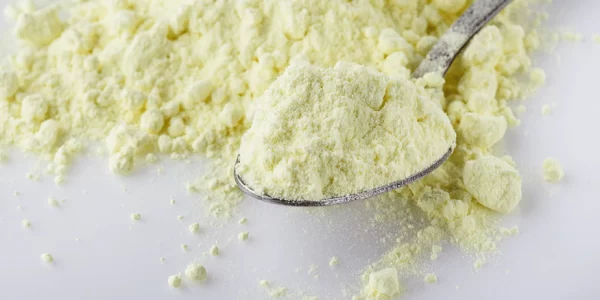Industrial sulfur is a vital raw material used in industries such as chemicals, fertilizers, and pharmaceuticals. For many applications, sulfur must be crushed into fine particles to enhance its reactivity, solubility, or ease of handling. The crushing process is critical to ensure sulfur meets the required particle size distribution for specific industrial uses. This article provides an overview of the methods, equipment, and challenges involved in the crushing process of industrial sulfur.
1. Properties of Sulfur Affecting Crushing
Sulfur has unique properties that influence its crushing behavior:
Brittleness: Sulfur is brittle, making it relatively easy to crush.
Low Melting Point: Sulfur melts at around 115°C (239°F), so heat generation during crushing must be controlled.
Electrostatic Charge: Sulfur particles can develop static electricity, leading to dust explosions or handling issues.
Toxicity: Sulfur dust can be harmful if inhaled, requiring proper dust control measures.
These properties necessitate careful selection of crushing methods and equipment to ensure safety and efficiency.
2. Crushing Methods
The crushing of industrial sulfur can be achieved through various methods, depending on the desired particle size and production scale:
2.1 Mechanical Crushing
Mechanical crushing is the most common method, using crushers and grinders to break down large sulfur lumps into fine powders. It is suitable for large-scale production and can achieve a wide range of particle sizes.
2.2 Cryogenic Crushing
Cryogenic crushing involves cooling sulfur to extremely low temperatures using liquid nitrogen. This process makes sulfur more brittle, allowing it to be crushed more easily. It is particularly useful for producing ultra-fine sulfur powders.
2.3 Wet Crushing
In wet crushing, sulfur is mixed with a liquid (usually water) to reduce dust generation and prevent static buildup. This method is less common but effective in specific applications where dust control is critical.
3. Equipment Used in Sulfur Crushing
The choice of equipment depends on the crushing method and the desired particle size. Common equipment includes:
3.1 Jaw Crushers
Jaw crushers are used for primary crushing of large sulfur lumps. They compress the material between two plates, breaking it into smaller pieces. They are suitable for coarse crushing but not ideal for fine powders.
3.2 Hammer Mills
Hammer mills use rotating hammers to strike and break sulfur into smaller pieces. They are versatile and can produce a wide range of particle sizes.
3.3 Ball Mills
Ball mills are used for fine grinding. They consist of a rotating drum filled with grinding media (e.g., steel balls) that crush sulfur into a fine powder. They are suitable for producing ultra-fine sulfur powders.
3.4 Cryogenic Grinders
Cryogenic grinders cool sulfur to extremely low temperatures and then grind it into fine particles. This equipment is ideal for producing ultra-fine powders with minimal heat generation.
4. Process Flow of Sulfur Crushing
The crushing process typically involves the following steps:
4.1 Pre-Crushing
Large sulfur lumps are reduced in size using primary crushers such as jaw crushers or impact crushers.
4.2 Grinding
The pre-crushed sulfur is fed into grinding equipment such as hammer mills or ball mills to achieve the desired particle size.
4.3 Classification
After grinding, the sulfur particles are classified using screens or air classifiers to separate them based on size. Oversized particles are returned for further processing.
4.4 Dust Control
Dust generated during crushing is controlled using dust collection systems such as bag filters or cyclones to ensure worker safety and prevent environmental contamination.
4.5 Packaging
The final sulfur powder is packaged in bags or containers for storage and transportation.
5. Challenges in Sulfur Crushing
The crushing of industrial sulfur presents several challenges:
5.1 Heat Generation
The low melting point of sulfur makes it susceptible to melting during crushing. Cooling systems or cryogenic methods are often employed to mitigate this issue.
5.2 Dust Explosions
Sulfur dust is highly flammable and can cause explosions if not properly managed. Dust control measures, such as ventilation and explosion-proof equipment, are essential.
5.3 Static Electricity
Sulfur particles can develop static charges during crushing, leading to handling difficulties and safety hazards. Anti-static measures, such as grounding equipment, are necessary.
5.4 Environmental Concerns
Sulfur dust can be harmful to the environment and human health. Proper dust collection and disposal systems are required to minimize environmental impact.

